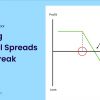Trading breakouts is one of the popular methods among intraday traders. Breakout trading involves taking a trade when a trading range or important support/resistance is breached by price. Breakouts are generally followed by periods of high volatility and intense price movements, making it an ideal situation for intraday trading. In this article we will discuss about 5 of the most common breakout strategies used by intraday traders. We will also learn how to create those strategies on the Streak platform.
1) Opening Range Breakout
The first few minutes of the trading day opening time is a very crucial period. It is characterized by high volatility and volume. Many of the traders are active during this period of the day as they open or close positions based on the overnight news events or previous day’s price action. This period of the day can therefore give cues about the market sentiment and the trend for the day.
Opening range is the high and low made by the prices for a given period after the market opens. Various periods are used by traders to establish the opening range. Some of the common ones are 15 min opening range, 30 min opening range and 1 hour opening range. Let’s take one of them as an example to understand the opening range. 15 min opening range means the high and low made between 9:15 and 9:30. Traders often take a long position when the high of the opening range is breached and a short position when the low of the opening range is breached by the price. Thanks to the Streak platform, we do not need to sit in front of the charts to identify when our stocks are breaking these important levels. Let’s see how we can create opening range breakout strategy on Streak platform:
2) Breakout of a particular candle
Like the opening range breakout, some traders create strategies based on the high-low range created by a particular candle of the day. For example, some traders might want to ignore the 9:15 to 9:30 range as it is an extremely volatile period and might want to trade the range made between 9:30 to 9:45. Such strategies can also be created easily. Lets have a look at an example:
3) Previous Day’s range breakout
Previous day’s low and high levels act as support and resistance respectively. If today’s price is trading between previous day’s high-low range, the market may pick up a trend once these levels are breached by the price. After the breakout, traders can take positions accordingly.
4) Breakout of range created by multiple candles
This is the extension of the strategy discussed in point number 2. This technique allows you to trade breakout of range created by multiple candles. Suppose a trader wants to go long when the price breaks the high made by the 1st 3 1 hour candles of the day i.e the high made between 9:15 to 12:15, then this technique can be used. Let’s have a look at an example in the video below.
5) Pivot Points Breakout
Pivot Points are a leading indicator. It calculates future support and resistance levels by comparing the preceding period’s high, low, and closing prices. Pivot points come in a variety of types. However we’ll concentrate on the most popular one i.e standard pivot points.
Pivot Points are important price levels near which the stock can rest, turn (change trend) or oscillate between two pivot levels. Previous day’s Open, High, Low, Close prices are used to calculate current day’s pivot points. Let’s see how we can create a pivot point breakout strategy:
Disclaimer: The information provided is solely for educational purposes and does not constitute a recommendation to buy, sell, or otherwise deal in investments.











Pingback: Scan and Backtest 52 Week High Breakout Strategy - Streak Tech